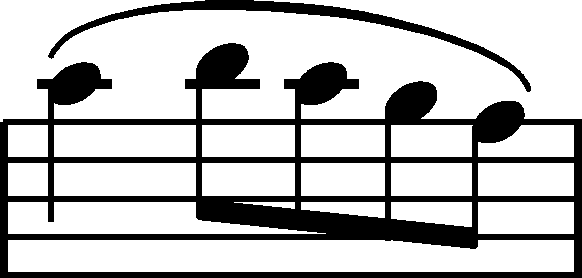



Issues : Corrections in A
|
b. 334
|
composition: Op. 21, Concerto in F minor, Mvt III
..
In A one can see a correction of the bottom note of the last crotchet in the L.H. Chopin initially wrote a b
category imprint: Corrections & alterations issues: Corrections in A |
|||||
|
b. 352
|
composition: Op. 21, Concerto in F minor, Mvt III
..
The layout of the notes in A suggests that the group of quavers initially included only four notes: category imprint: Corrections & alterations issues: Corrections in A , Main-line changes |
|||||
|
b. 403
|
composition: Op. 21, Concerto in F minor, Mvt III
..
Originally, the 2nd crotchet in the bar in A was a c2-f2-c3. Chopin changed the middle note from f2 to e category imprint: Differences between sources; Corrections & alterations issues: Corrections in A , Errors resulting from corrections , Errors in GE , GE revisions |
|||||
|
b. 409-411
|
composition: Op. 21, Concerto in F minor, Mvt III
..
In A one can see a three-bar correction here: the text on the top stave, including the part of the R.H. and crotchets in the L.H. (two in each bar), was crossed out and rewritten on the staves above (R.H. part) and below (the crotchets in the L.H. together with the necessary changes of clefs). The reason for these changes was an imprecision following from the original layout of the text – formally, the octave sign over the part of the R.H. would also apply to the crotchets in the L.H. written below it, which, of course, was not intended by Chopin. The original crossed out notation does not include 8- - -, so Chopin noticed a possible inaccuracy only when proceeding to write an octave sign. category imprint: Corrections & alterations; Source & stylistic information issues: Corrections in A |
|||||
|
b. 422
|
composition: Op. 21, Concerto in F minor, Mvt III
..
In the sources, the cautionary
In the main text we remove the category imprint: Editorial revisions; Corrections & alterations issues: Corrections in A , Cautionary accidentals , Last key signature sign |

 which he then reworked into a c1 and added names of both notes for the sake of clarity – c-g. According to us, it is probably a correction of an erroneously written version of the accompaniment (cf. bar 326) and not a change implying an improvement.
which he then reworked into a c1 and added names of both notes for the sake of clarity – c-g. According to us, it is probably a correction of an erroneously written version of the accompaniment (cf. bar 326) and not a change implying an improvement. .
.

 at the beginning of the bar is before B
at the beginning of the bar is before B returning g2 on the 3rd beat of this
returning g2 on the 3rd beat of this